Apple Mac mini Review (Mid 2010)
by Anand Lal Shimpi on August 9, 2010 3:37 AM ESTSpin the mini
Apple has done away with conventional feet and instead the mini rests on a circular pedestal. The circular base doubles as an access port to the internals of the mini.
The removable cover has two indentions that you put your fingers in. A counter clock-wise twist (about 1/16th of a rotation) will unlock the cover. Removing it reveals the only easily user replaceable components in the mini: the DDR3 SO-DIMMs.
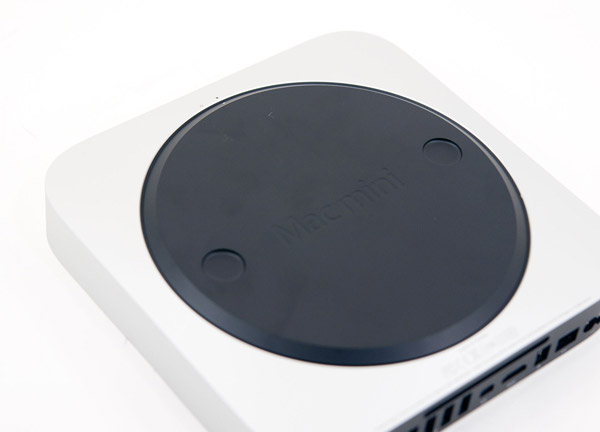
The $699 configuration comes with two 1GB DDR3-1066 sticks. Woefully inadequate for today’s workloads, particularly since the mini only comes with a 5400RPM 2.5” HDD so any swapping to disk is painfully slow.
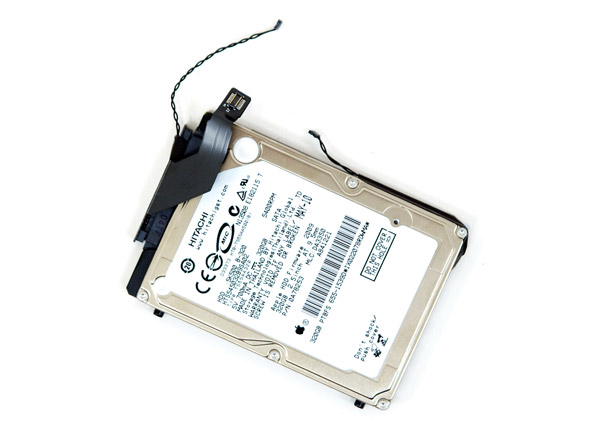
The 2.5" Hitachi 5K500 5400RPM HDD
Replacing memory is as easy as can be on the Mac mini, just remove the cover, pop out the sticks and install new ones. It’s just like a notebook, but easier.

Upgrading the hard drive is much more complicated unfortunately. To get it out you have to remove the motherboard, which isn’t hard but definitely not easy. iFixit has a guide here.
Start by removing the four screws that hold the WiFi antenna in place. Don’t forget to disconnect the antenna cable once you’ve done so.
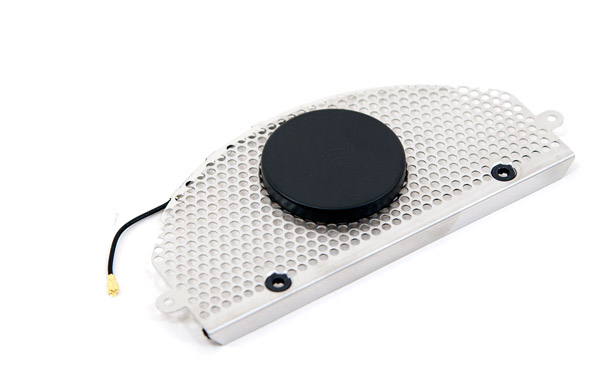

The entire system is cooled by a single fan that channels air through a shroud over a heatsink with a pair of heatpipes. Remove the fan screws, remove the shroud, remove the heatsink screws and then unscrew everything you see on the motherboard and you’re half way there.
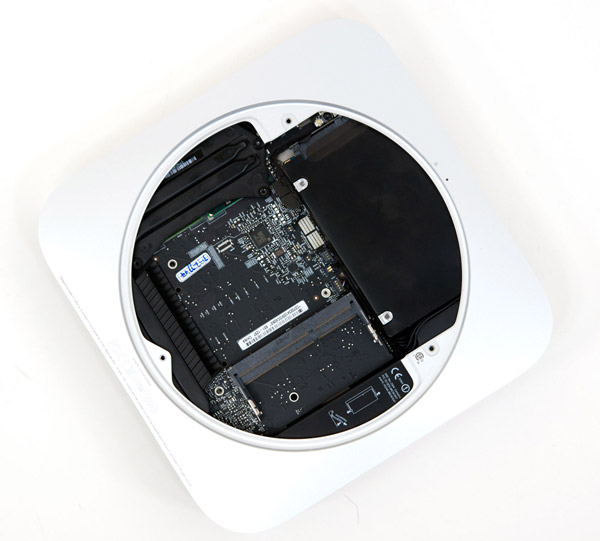
Disconnect all of the temperature sensors and cable connectors from the back of the board and you can finally slide the board out. Unfortunately there’s no easy way to grab onto the motherboard itself so you’re better off sticking two thin screwdrivers through the two open holes in the motherboard and using them to pull the board out of the chassis.
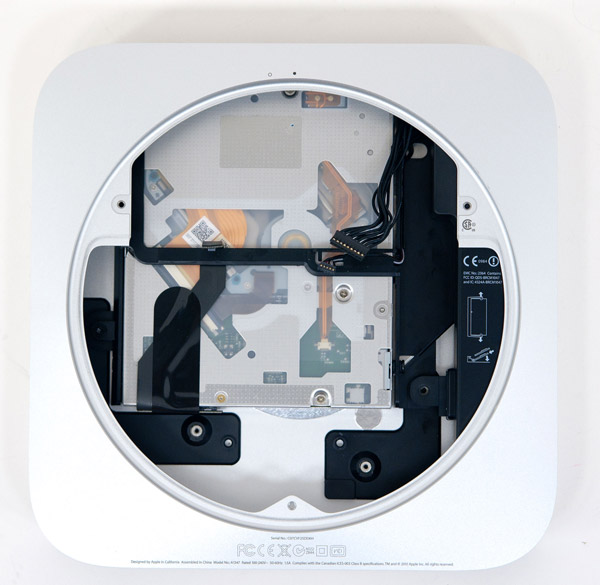
The mini minus a motherboard and HDD
When you’ve done that you can pry the HDD out of its resting spot, unplug its cable and replace it. Ugh.
With the motherboard out we can remove its heatsink and get a bit more personal. Down to the screws in the system, the Mac mini is very much a headless notebook:
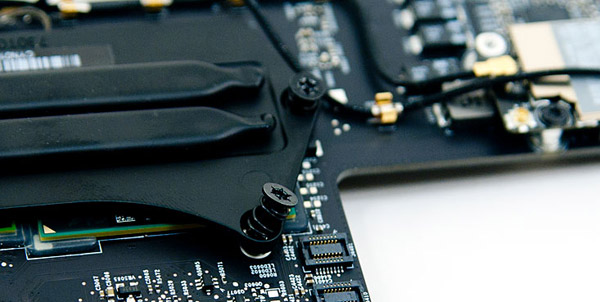
These spring loaded screws are common on notebook heatsinks

Underneath the heatsink we have the two chips that make up the Mac mini: Intel's Core 2 Duo P8600 (right) and NVIDIA's GeForce 320M (left):

The 320M has the graphics, memory controller, SATA controller, PCIe and USB interfaces. Looking at the size of the die you can see how highly Apple values the GPU over the CPU in a system like this. Ten years ago you'd be looking at a four-chip solution (CPU, North Bridge, South Bridge, GPU), today we're down to two. Soon enough we'll be able to have a single SoC that delivers the functionality and performance of these two discrete chips.
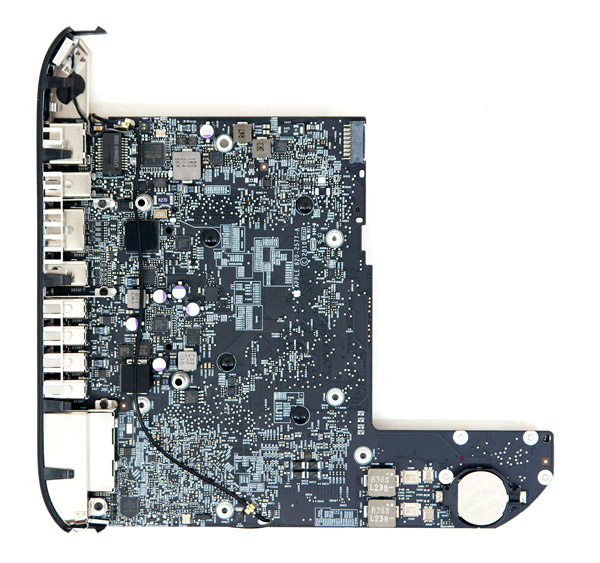










93 Comments
View All Comments
Guspaz - Monday, August 9, 2010 - link
Ever since the "Intel HD" integrated graphics (the ones that are on-package for certain i3/5/7 models) came out, Intel has had passable integrated graphics. They perform on-par with the GeForce 9400M (which was benchmarked in this review). That's not saying much, but it's an enormous improvement over the previous generation of GMA. That 9400M as benchmarked, though, is from a year ago (mid 2009), so I can't argue that Intel has caught up enough with nVidia to be a viable alternative for Apple. If they keep up the current momentum, though, they'll probably catch up with nVidia soon enough.From a more anecdotal perspective, I recently bought a Toshiba Portégé r700 (Anandtech recently discussed it in their "under 14" article) which (for my model) features a Core i5 520M. The graphics are Intel's on-package.
Performance is acceptable. StarCraft 2 is playable at native resolution with a perfectly smooth framerate, but this is admittedly at low to low-medium settings. That's more than I expected to get out of it, though; I didn't buy this thing for gaming, so anything at all is a bonus.
thunng8 - Tuesday, August 10, 2010 - link
9400M graphics was first released October 2008, not mid 2009. Also, the Integrated graphics used in the i3 mobile is clocked significantly lower than the i5 desktop. Only on the i5 that the Intel integrated graphics almost matches the 2008 9400M.Stuka87 - Monday, August 9, 2010 - link
I would have loved to see how it compared to the previous Mac Mini's with the intel graphics and such.And like some others have asked, will it run Starcraft 2? I typically play on my PC, but would be nice to not have to switch some times (Since saved games are saved on b.net).
archer75 - Monday, August 9, 2010 - link
I'm curious to know how World of Warcraft performs at 1900x1200 with all in game settings maxed?icecreampop3 - Monday, August 9, 2010 - link
At 1280x1024, maxed, 23fps according to notebookcheck.net. I'd say maybe 18 fps @ 1080p.archer75 - Monday, August 9, 2010 - link
I just looked up some youtube videos of wow running on the mini at 1920x1080, slightly lower than my resolution of 1920x1200 but they were getting 18-25fps in cities and warsong. So not that great.james.jwb - Monday, August 9, 2010 - link
Not only a WOW player, but you want a Mac Mini?You must be one tough SOB to admit to this ;)
tipoo - Monday, August 9, 2010 - link
I'm really confounded by the price jump over the previous generation. If it had stayed the same, I may have found the Mini to be worth it.mados123 - Monday, August 9, 2010 - link
A better alternative for an HTPC would be the Viewsonic VOT550 w/ Blu-ray, Core 2 Duo 2,2GHz, 4GB, etc. for around $600.http://www.viewsonic.com/vot530-550
Claudius-07 - Monday, August 9, 2010 - link
Just got an Acer Revo and installed XBMC. I have a seagate T+, HDX 1000, WD Live, and the Revo+XBMC is the best thing thus far (however can't bitstream HD audio). Anyhow, love Apple but still scratching my head on this one for the price.